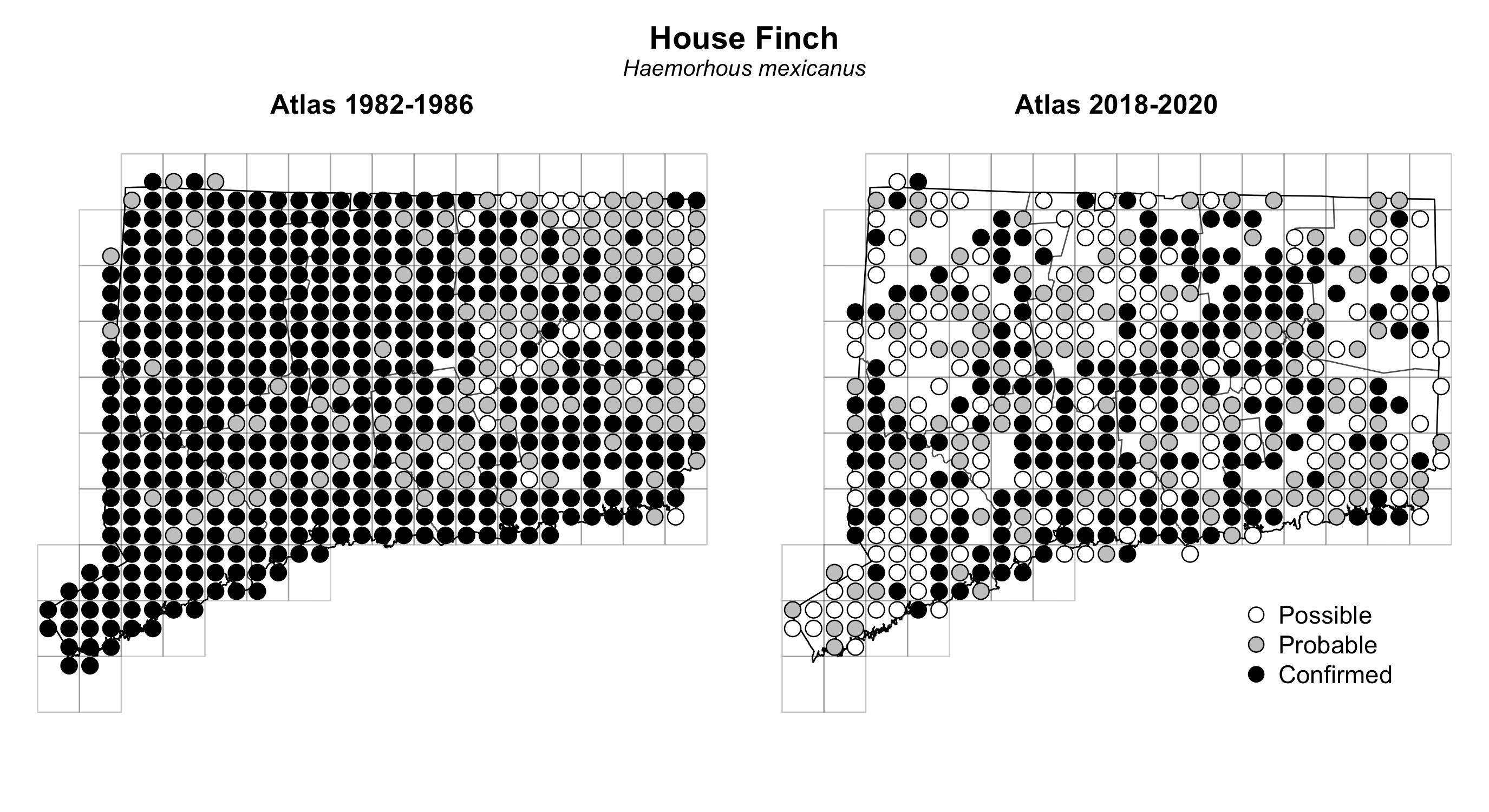Back in July 2018 – midway through the project’s first breeding season, I identified 12 species to confirm in every block. Based on results from the first atlas, and my experience atlasing across the state, these 12 species seemed like they could be found pretty much anywhere. Whether that’s true is hard to say without ensuring that we have good coverage in every block. So, the next couple of months are the last chance to follow up and see if these species can be found in places they have not yet been reported from.
With that in mind, I thought it would be good to look at what the data currently shows for each of these species. Of the species on the list, house finch is one of the earliest nesters, and so should be relatively easy to confirm by now. I have had families in my yard on and off for a month or so, and I’ve recently been seeing small groups of young birds following a parent around quite often. In fact, the chattering of young house finches is a sound I’ve come to recognize – and when I hear it, it’s usually followed by the sight of 3-4 birds flying in a loose group, landing, and then at least one of the group wing-fluttering as it begs to be fed.
The current atlas map, however, shows that there are many blocks that still lack reports of house finches, and that surprisingly few have confirmations.

Breeding atlas reports of house finches in Connecticut during the 1980s (left) and between 2018 and May 2021 (right). All data are preliminary and will be subject to review; a few of the most recent reports may not yet be included in our maps.
This is a pattern I’m noticing for quite a lot of birds associated with suburbia, and I suspect reflects a bias in where we search for birds – focusing our attention on more natural habitats, and neglecting those with a heavier human footprint. Fixing that bias, though is critical if we want to be able to use the atlas data to track changes in bird communities over time.
House finches are one of those species that I often miss when I’m out atlasing, unless I make an effort to seek out the right habitat. Cemeteries are a good place to look, as are town parks, the edges of sports fields, and parking lots associated with office buildings. Farm buildings can be good too, or simply wandering through a suburban neighbourhood. These same areas also often turn up other species that I might otherwise miss – mockingbirds, bluebirds, flickers, and Carolina wrens, for example. And, if house sparrows or starlings are missing from a block, these are great places to find them too.

This fledgling house finch is one of a family that has been coming to my feeders over the past few days. At first the young would sit on top of the pole, begging loudly until a parent fed them, but yesterday they started taking food themselves. Once their distinctive chattering is familiar, you’ll notice it frequently, alerting you to family groups of youngsters following an adult around.